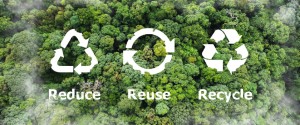When facing plastics, a widely used material, we often hear the three concepts of “renewable”, “recyclable” and “degradable”. Although they are all related to environmental protection, their specific meanings and importance are different. Next, we’ll dive into the differences between these three concepts.
“Renewable” means that a certain resource can be continuously used by humans without being exhausted. For plastics, renewable means using renewable resources to produce plastics from the source, such as using biomass or certain wastes as raw materials. By using renewable raw materials, we can reduce our dependence on limited petroleum resources, reduce energy consumption and environmental pollution. In the plastics industry, some companies and researchers are working hard to develop new technologies to produce plastics from biomass or other renewable resources. These efforts are critical to achieving the goals of sustainable development.
2. Recyclable
“Recyclable” means that certain waste items can be reused after processing without causing new environmental pollution. For plastics, recyclability means that after they are discarded, they can be converted into recycled plastic materials through collection, classification, processing, etc., and can be used again to produce new plastic products or other products. This process helps reduce waste generation and pressure on the environment. In order to achieve recyclability, we need to establish a complete recycling system and infrastructure, encourage people to actively participate in recycling activities, and strengthen supervision and management.
3. Degradable
“Degradable” means that certain substances can be decomposed into harmless substances by microorganisms under natural conditions. For plastics, degradability means that they can naturally decompose into harmless substances within a certain period of time after being discarded, and will not cause long-term pollution to the environment. This process takes a long time, usually months or years. By promoting degradable plastics, we can reduce environmental pollution and ecological damage, while reducing the pressure on garbage disposal. It should be noted that degradable does not mean completely harmless. During the decomposition process, some harmful substances may still be released into the environment. Therefore, we need to ensure the quality and safety of degradable plastics and take appropriate measures to control their use and disposal after disposal.
To sum up, the three concepts of “renewable”, “recyclable” and “degradable” are of great significance in the processing and environmental protection of plastics. They are related but each has its own focus. “Renewable” focuses on the sustainability of the source, “recyclable” emphasizes the reuse process, and “degradable” focuses on the environmental impact after disposal. By in-depth understanding of the differences and applications of these three concepts, we can better choose the appropriate treatment method and achieve environmentally friendly management of plastics.
Post time: Jun-27-2024
